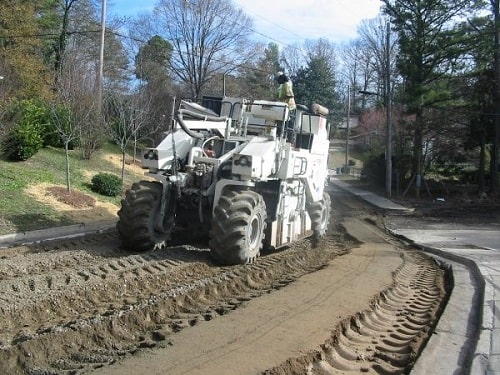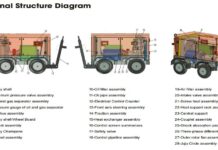Considering environmental impact and cost, removing and replacing structures during a reconstruction is not very efficient. A good as well as a popular alternative to doing this is what is known as full-depth reclamation (FDR). This is an in-place method that is used in the recycling and reconstruction of existing pavements.
The existing pavement section material is used as the base for a new surface. FDR can include adding various chemicals to this base layer. This is in order to increase its capacity and strength. Treating the base layer and the recycled asphalt helps to provide a strong foundation for both present and future use.
Full-depth reclamation provides a cost-effective solution for maximizing budgets. It saves time, materials as well as other resources.
The process has been used successfully for failures that are associated with base and subgrade degradation. It is also used for other types of premature pavement failure, cracking, patches and deep rutting. You can see this article for more on this.
The Full Depth Reclamation Process
The FDR process begins by pulverizing old, distressed asphalt and base materials. This is done using specialized machinery known as a reclaimer. The depth of pulverization is determined during the pre-project planning phase. This is to ensure that the final surface meets the desired requirements.
The next step is to remove some part of the pulverized material. This is to ensure that the final elevation of the pavement is correct. Next, water is added to the pulverized material so that it reaches an optimal moisture content. This is for compaction.
A variety of materials like lime, cement, fly ash and asphalt emulsion are then added for stabilization. A reclaimer is then employed again to mix the materials. After grading and shaping, the new base is then compacted so that a strong and durable base is produced. The final surface which can be a concrete or asphalt surface will eventually provide smooth rides for many years to come.
There are different stabilization methods including mechanical, chemical and bituminous stabilizations. While any of these may be used, combining any two or the three will result in increased stabilization.
There is no need for hauling any materials in or out since FDR recycles materials. In essence, vehicular movements are reduced and detours are not required as it can be carried out under traffic. This makes FDR a very convenient process for local residents.
When compared to asphalt, full-depth reclamation with cement is more cost-effective. It saves money and by using subsisting materials, it also preserves natural resources.
If proper engineering, as well as testing protocols, are employed, the FDR process offers a life cycle of about 30 years. This article https://theasphaltpro.com/articles/best-practices-full-depth-reclamation/ explains the whole process in depth.

Benefits of Full Depth Reclamation
When using FDR, the new base provides many engineering benefits by acting as a foundation for the latest wearing surface. Some of the benefits of FDR include:
Speed
When compared to other reconstruction methods, full depth reclamation takes a shorter length of time. It can be finished in a matter of days compared to a project that needs to remove old materials and bring ones. This can take weeks to complete.
Durable
Full-depth reclamation offers durability because it creates a new and strong base that helps to extend the lifetime of the pavement. Failure in asphalt roads and pavements are due to the underlying layers becoming weak. With FDR, it is only the surface that can reach the end of its life, not the FDR mixture.
Less Traffic Disruption
As mentioned earlier, FDR is a convenient process for local residents. Asides from not bringing in too much machinery and materials, a reconstructed road is available for use within hours of completion.
Cost Savings
There are several costs associated with reconstructing a road or pavement. Think of the cost of removing as well as disposing of old materials and bringing in new ones. However, full depth reclamation cost is low as there is no need to dispose of or bring in any materials.
FDR is also great for the environment because the materials can be reused and recycled. This means less use of resources and less impact on the environment.
Stable Structural Layer Coefficients
FDR treated roads typically have a structural layer coefficient of between 0.14 and 0.30. This can be used in planning and design to reduce the thickness of other layers of the pavement. This further reduces the number of resources that are required.
Conclusion
Road and pavements are important structures within a society. They need constant evaluation and maintenance. When there is a need for a reconstruction, one of several methods can be used.
However, full depth reclamation is one of the best techniques to use. This is because it recycles already existing materials. This makes it cost-effective, durable and environmentally friendly.





























